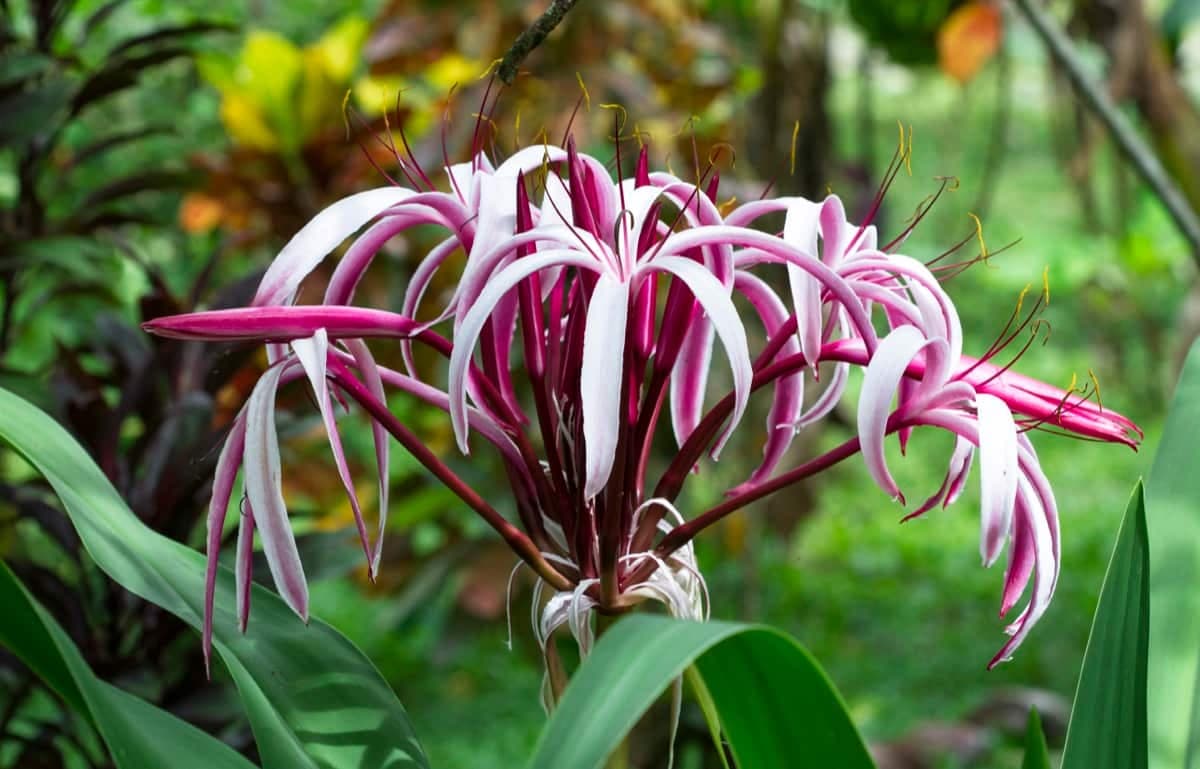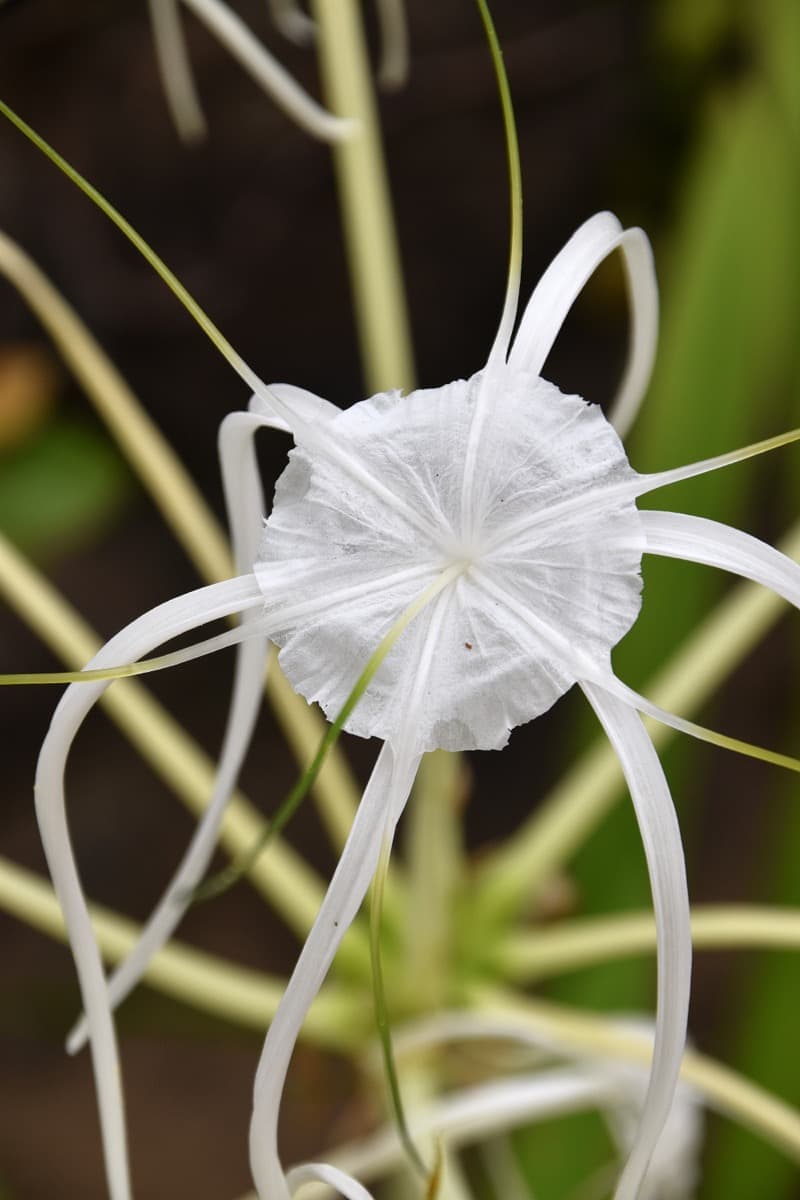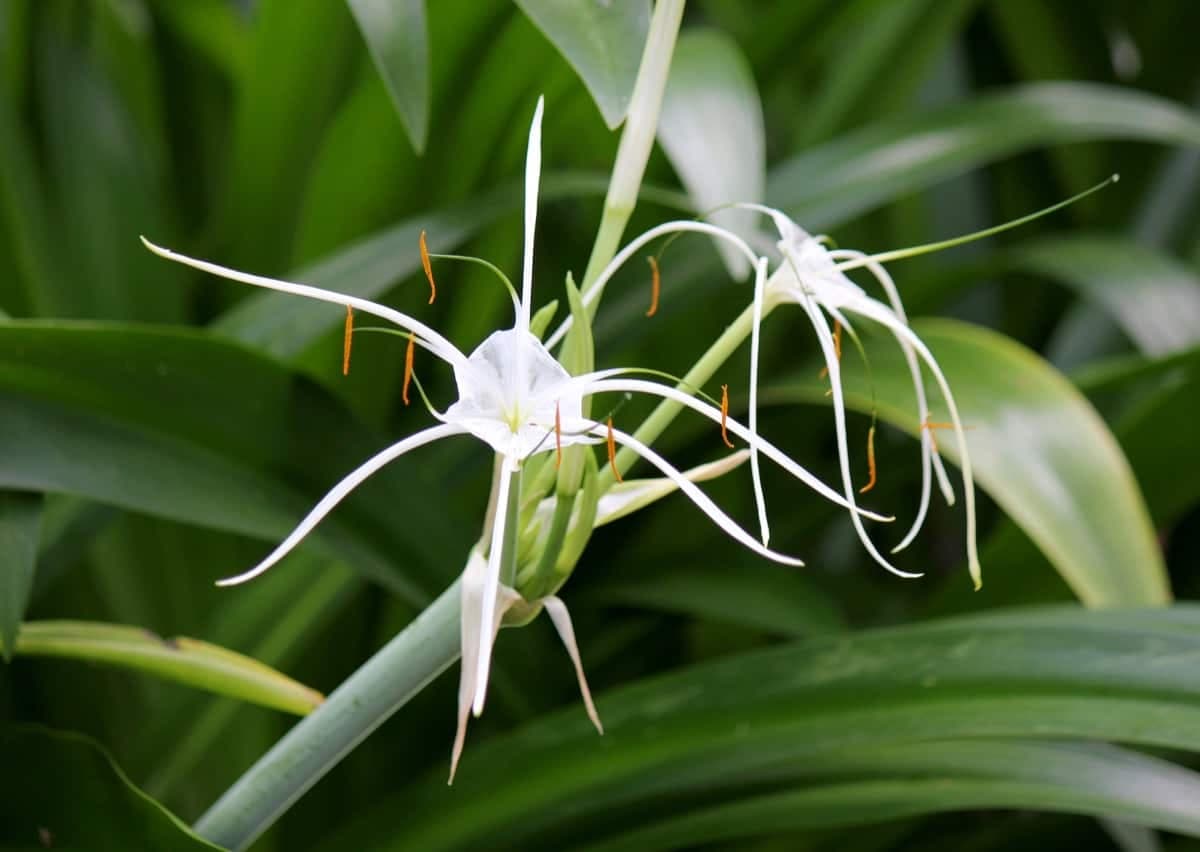Welcome to a comprehensive guide on growing and caring for the beautiful and captivating Spider Lily. This unique plant, known for its exotic appearance and vibrant color, can make a perfect addition to any garden setting. From the initial planting instructions to ongoing care tips, this guide is designed to assist novice and experienced gardeners in nurturing this plant to its full potential. Topics such as growing spider lilies in pots, utilizing spider lily seeds, determining when to plant spider lily bulbs, how to grow spider lilies from seed, and more will be covered extensively.

How to Grow and Care for Spider Lily
Best Soil Conditions for Growing Spider Lilies
This particular plant prefers well-draining, fertile soil. Whether you’re planning to cultivate spider lilies in a garden bed or pot, ensuring the soil has good drainage properties to prevent water logging is crucial. To achieve this, add organic materials like compost or well-aged manure to your soil.
Furthermore, it’s advisable to test the soil pH, which ideally should be slightly acidic to neutral (pH 6.0 – 7.0) for spider lilies to flourish. If your soil is too alkaline, you may need to add a little garden sulfur to correct the pH. On the other hand, spider lilies can also thrive in various soil types, including clay, loam, or sandy soil, provided they are rich in organic matter. Remember, a good soil foundation significantly contributes to the health and vitality of the spider lily plant.
Watering Requirements for Healthy Spider Lily Growth
Spider lilies prefer soil that’s consistently moist but not waterlogged. A watering routine should be established based on the current weather conditions and the stage of the plant’s growth. The plant requires more water during the growing and blooming stages, particularly in dry, hot periods.
However, it’s important not to over-water as this could lead to bulb rot and other problems. Also, when watering, focus on the base of the plant rather than the foliage to reduce the risk of fungal diseases. After the blooming season, when the plant enters dormancy, reduce the watering to prevent the rotting of the bulbs.
Sunlight Needs for Vibrant Spider Lily Blooms
Regarding sunlight requirements, spider lilies thrive best in full sun to partial shade. Although they can survive in areas with less light, they ideally need at least six hours of sunlight each day for vibrant and prolific blooms. Position the plants where they can soak up the morning sun but are protected from harsh afternoon light. Too much intense sunlight can cause leaf burn, while too little light may result in sparse blooming. Growing spider lilies in pots can be easily moved around to find the best light conditions.
Pruning Techniques to Enhance Spider Lily Appearance
While spider lilies require minimal pruning compared to other plants, proper techniques can further enhance their appearance and longevity. The best time to prune is after blooming, when the flowers have faded, and the leaves start to turn yellow. At this point, cut back the spent flower stalks down to the ground level. However, don’t be too eager to remove the leaves.
Allow them to die back naturally because they continue photosynthesizing, providing much-needed energy to the bulbs for next year’s growth. Also, if you notice any dead, diseased, or damaged foliage during the growing season, prune them immediately to prevent the potential spread of disease. When dividing spider lilies, recommended every few years to prevent overcrowding; it’s also a good opportunity to do some light pruning.
Preventing Common Pests and Diseases in Spider Lilies
The spider lily is a robust plant, not usually susceptible to many diseases or pests. However, looking for potential threats such as aphids, spider mites, and slugs can prevent minor issues from becoming significant problems. Regularly inspect your spider lilies for signs of pests or diseases.
In case you missed it: How to Grow and Care for Lily of The Valley

In an infestation, a simple dish soap and water solution sprayed on the plant can effectively deal with aphids and spider mites. Slugs can be deterred by sprinkling crushed eggshells or diatomaceous earth around the base of the plant. Bulb rot can be a potential problem, particularly in waterlogged soils, so ensuring proper drainage is vital to prevent this. Fungal diseases can also be avoided by watering at the base of the plant and allowing proper spacing for air circulation.
Fertilizing Tips for Robust Spider Lily Plants
Like any other plant, Spider lilies can benefit from regular feeding to ensure robust growth. Fertilizing becomes particularly important when growing spider lilies in pots, as nutrients in potting soil can deplete over time. Optimal time for spider lily fertilization is during spring when new growth appears. Use a balanced, slow-release fertilizer that contains equal amounts of nitrogen, phosphorus, and potassium.
Fertilizer application will promote healthy foliage and vibrant and plentiful blooms. Always follow the package instructions when applying fertilizers to avoid over-fertilization, which can lead to burnt foliage or hindered plant growth. Remember to water the plants thoroughly after each fertilization to help the nutrients seep into the soil and reach the roots effectively.
Winter Care and Protection for Spider Lilies
While spider lilies are relatively hardy, they require extra care and protection during the winter, especially in regions with harsh weather conditions. Spider lily bulbs can survive in the ground in USDA hardiness zones 7-10. However, the bulbs must be dug up and stored in colder areas for winter.
After the foliage has died back, gently dig up the bulbs, brush off any excess soil, and let them dry in a cool, dry place for a few days. After drying, keep the bulbs in a cool, dark place in a box or paper bag filled with peat moss or perlite until spring. This storage method can also be used when you’re not immediately replanting spider lily bulbs you’ve bought or divided.
Propagation Methods to Expand Your Spider Lily Garden
The most common method of propagating spider lilies is by dividing the bulbs. Ideal periods for dividing spider lilies are late fall or early spring, when the plant is inactive. Carefully extract the bulbs and detach the smaller bulbs (offsets) from the main bulb. These offsets can then be replanted immediately.
In case you missed it: How to Grow and Care for Calla Lily: A Step-By-Step Comprehensive Guide

Spider lilies can also be grown from seeds, although this method is more time-consuming. After the flowers have bloomed and faded, seed pods form. Collect these seed pods once they’ve dried out, extract the seeds, and plant them in well-draining soil. Patience is key, as it may take a few years before seed-grown spider lilies produce their first flowers.
- Feed Your Flock for Less: Top 10 Tips to Save on Chicken Feed
- Ultimate Guide to Ossabaw Island Hog: Breeding, Raising, Diet, and Care
- Hatching Answers: The Top 10 Reasons Your Chickens Aren’t Laying Eggs
- Eggs and Economics: Breaking Down the Cost of Raising Backyard Chickens
- Defend Your Greens: Proven Methods to Keep Iguanas Out of Your Garden
- Ultimate Guide to Cinnamon Queen Chicken: A Comprehensive Guide for Beginners
- Ultimate Guide to California Tan Chicken: Breeding, Raising, Diet, Egg-Production and Care
- Ultimate Guide to Marsh Daisy Chicken: Breeding, Raising, Diet, and Care
- 10 Types of Chicken Farming Businesses You Can Start for Profits